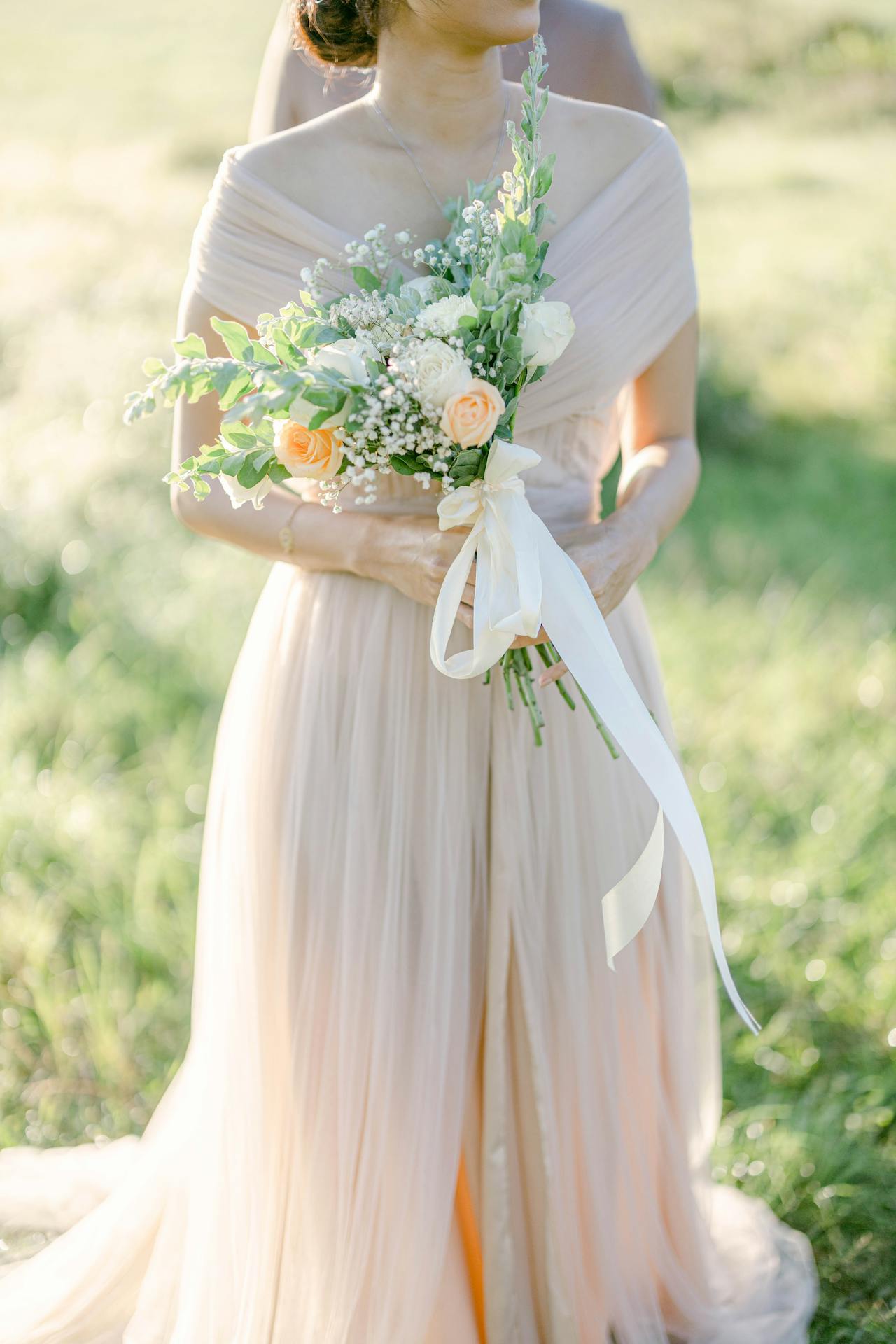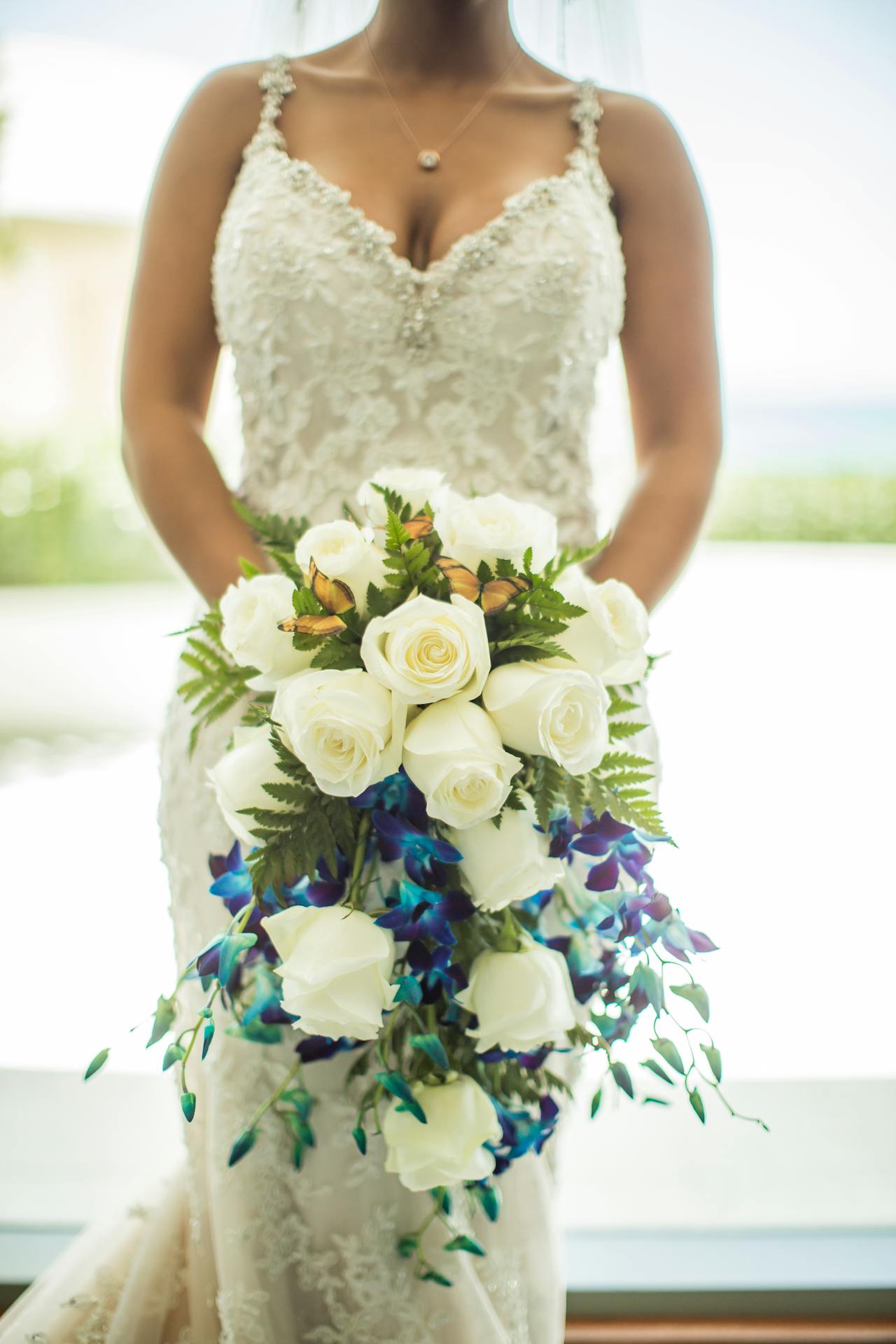Since the ancient Romans began to carry and wear floral garlands to their weddings as a symbol of fertility, fidelity, and new beginnings, flowers have played a significant role in bridal fashion, but flowers play several roles back in history. One of the many beliefs of having flowers during weddings was to combat unlucky evil spirits, women in the Middle Ages added a less uplifting twist to the tradition by accessorizing their bridal dress with a mixture of hot spices and herbs. Dill was particularly popular since, in addition to being considered to ward off evil spirits, it was also referred to as the plant of lust; its inclusion was anticipated to arouse lust as the newlyweds prepared to consummate their marriage.
It is true that flowers have great importance but possess symbolic meanings as well. A bride always remembers the flowers that were sent to her, even though the colors that were chosen to have special connotations. Flowers can be utilized for a variety of wedding-related activities, such as sending flowers to the bride or groom the night before the ceremony, during the wedding, as a corsage for the bridal shower, or as a centerpiece for a balloon bouquet. The bridal bouquet, boutonnieres, and corsages are just a small portion of the wedding flowers that can be used. The bridal bouquet is usually a crucial component, but don’t forget about the Flower Girl baskets, the venue’s decorations, and the decorations for the venue where the reception will take place.
The History of Flower Meanings
Floriography, also known as the “language of flowers,” is the study of how floral arrangements can convey ideas. Various flowers have been associated with meaning for millennia and throughout many civilizations. In many of his plays, including Henry VI, when Englishmen chose red or white roses as symbols of their allegiance, even William Shakespeare used floriography.
The 19th-century Victorian England played a significant part in the widespread popularization of the language of flowers. People started utilizing floral arrangements at this time to send coded signals to the recipients to express things that they felt at the time couldn’t be expressed out loud. Many of the symbols we still use to represent flowers still correspond to the Victorian-era meanings that were ascribed to them. According to Yumiko Fletcher of Hana Floral Design, a floral specialist, “There can be multiple and perhaps conflicting meanings to different flowers, but most of what was described in the Victorian era is still regarded significant for today.”
Flowers at Weddings
Ancient Greek writings provide the earliest known instances of flowers being used at weddings. Before the wedding, the bride is adorned by Greek bridesmaids with wreaths made of regional flowers and plants. These flowers, which were seen as a wedding gift from Mother Nature herself, stood for the couple’s dedication to one another and the unforced nature of their love.
The most significant aspect of floral smells in many civilizations has something to do with hygiene. The fragrances of freshly cut flowers frequently served to cover disagreeable odors because, before modern times, bathing was at best a semi-annual event for many people. Thankfully, today’s requirements for personal hygiene are different, but the ceremony is still made more enjoyable by the floral scents.
Bridal Bouquets
Bridal bouquets in the past had various uses besides only enhancing the beauty of the bride. In some cultures, the wedding celebration that marked the woman’s transformation from daughter to the wife was seen as a perilous time when she was vulnerable to paranormal perils. Bouquets frequently contained strong-smelling plants and herbs like garlic. They released perfumes to ward off evil spirits and shield the bride from curses from envious guests.
Spreading Flower Petals
Spreading flower petals on the ground is another English tradition that is now regarded as a romantic gesture. This custom was viewed in the Victorian era as a technique to increase the likelihood that a wedding would be successful and guarantee that the bride would lead a healthy, happy life with her spouse.
Tossing the Bouquet
Today, this enjoyable floral custom frequently results in smiles and happiness, and many people think that the person who catches the bouquet will be the one to get married next. But the act was initially intended as a distraction because previous customs believe that at the conclusion of a wedding ceremony, the guests in England would rush forward to the bride to take some of the bride’s luck home with them, they would seize and rip off bits of her dress. The bride would throw her bouquet to the crowd in an attempt to divert attention away from this attack so that the newlyweds may flee quickly.
Flowers to Avoid at Weddings
Not all the symbolic meanings associated with flowers are favorable. Some flowers are used to symbolize sadness, grief, or other traits that are generally unfavorable and don’t fully fit with wedding celebrations. According to Fletcher, peonies, which are currently a popular wedding flower, “were originally used to announce ‘anger,’ however the peony is known for bravery, courage, and good fortune in Japan, thus flowers can have many meanings depending on the region. In the 17th century, a very interesting fact about flowers was recorded. This is when tulips became more valuable than gold because the wealthy Dutch people became extremely passionate about this flower.
Some people claim that petunias have a calming aura, but they can also symbolize bitterness and hatred, which many couples wouldn’t want during their wedding. Daffodils are symbolic of respect in a similar way, but they also connote unrequited love, which isn’t typically a theme chosen for a wedding. Lotus flowers are thought to represent unrequited love, much like the unrequited love of the daffodil. In the end, it’s crucial to comprehend the many different meanings a flower could have and determine whether they complement your wedding concept.
Incorporating Personal Meaning into Flower Arrangements
Beyond the conventional interpretations of flowers, couples should consider any sentimental connections they may have with certain blossoms. You should feel confident using your own bridal bouquets, boutonnieres, and centerpieces to incorporate the symbolism you connect with flowers.
Many engaged couples want specific flowers because they are meaningful to them personally or because they are a lovely tribute to a dearly lost family member, according to Fletcher. Did your dearest grandma always have hydrangeas all over her house? Then, it can be a meaningful statement to add these flowers along with varied flower choices on your wedding day. You might as well consider adorning the aisle with beautiful hydrangeas to honor your beloved grandmother. Perhaps early on in your relationship, did your partner present you with a bouquet of wildflowers that they had collected on a significant road trip? Let your wedding flowers be inspired by that special memory. Personal touch of the choicest flower with depth and meaning can never go wrong on your special day.


